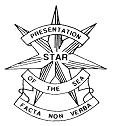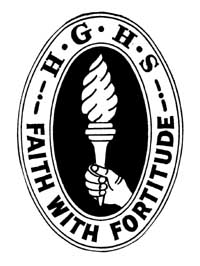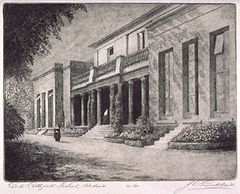
Star of the Sea College is an independent, Catholic, day school for girls, located in Brighton, an inner south-eastern suburb of Melbourne, Victoria, Australia.

Marist Regional College is a Roman Catholic, co-educational, secondary school, located in Parklands, a suburb of Burnie, Tasmania, Australia.

The Friends' School, Hobart is an independent co-educational Quaker day and boarding school located in North Hobart, a suburb of Hobart, Tasmania, Australia.

Hornsby Girls' High School is a government-funded single-sex academically selective secondary day school for girls, located in Hornsby, a suburb on the Upper North Shore of Sydney, New South Wales, Australia. Founded in 1930, the school's first principal was the scientist Sarah Agnes Angus Brewster.

St Gregory's College Campbelltown is an independent Catholic single-sex and co-educational comprehensive and specialist primary and secondary day and boarding school, located in Gregory Hills, near Campbelltown, a south-western suburb of Sydney, New South Wales, Australia. With specialist expertise as an agricultural school, St Gregory's College provides a co-educational environment for students in the Kindergarten to Year 6 primary school; and a boys-only environment for students in the Year 7 to Year 12 secondary schools.

The Presbyterian Ladies' College, is an independent, day and boarding school predominantly for girls, situated in Peppermint Grove, a western suburb of Perth, Western Australia.

St Scholastica's College is an independent Roman Catholic single-sex secondary day and boarding school for girls, located in Glebe Point, in Sydney, New South Wales, Australia.

Seymour College is an independent, Uniting Church, day and boarding school for girls, located at Glen Osmond, Adelaide, South Australia.

Fahan School is an independent school for girls located in Sandy Bay, a suburb of Hobart, Tasmania, Australia. It is a non-denominational school with a Christian ethos.

Burwood Girls' High School is a public, comprehensive, secondary school for girls, located in Croydon, an inner western suburb of Sydney, New South Wales, Australia.

Delany College is an independent Roman Catholic comprehensive co-educational secondary day school, located in Granville, a western suburb of Sydney, New South Wales, Australia; in the tradition of the Patrician Brothers. Founded in 1942 as the Patrician Brothers' High School, the College is administratively overseen by the Catholic Education Office of the Diocese of Parramatta.

St Clare's College is an independent Roman Catholic single-sex secondary day school for girls, located in Waverley, in the Eastern Suburbs of Sydney, New South Wales, Australia.

Genazzano FCJ College is a Roman Catholic, day and boarding school for girls, located in Kew, an eastern suburb of Melbourne, Victoria, Australia.

St Catherine's School is an independent and non-denominational Christian day and boarding school for girls, located in Toorak, an inner south-eastern suburb of Melbourne, Victoria, Australia.

St Mary's Anglican Girls' School is an independent, Anglican, day and boarding school for girls, located in Karrinyup, a suburb north of Perth.

Strathcona Girls Grammar School is an independent, Baptist, day school for girls, located in Canterbury, an inner-eastern suburb of Melbourne, Victoria, Australia.
Burnie High School is a government comprehensive secondary school for boys and girls located in Cooee, a suburb of Burnie, Tasmania, Australia. Established in 1916, the school caters for approximately 600 students from Years 7 to 10. The college is administered by the Tasmanian Department of Education.
Grace Tame is an Australian activist and advocate for survivors of sexual assault. Tame was named 2021 Australian of the Year on 25 January 2021.


















